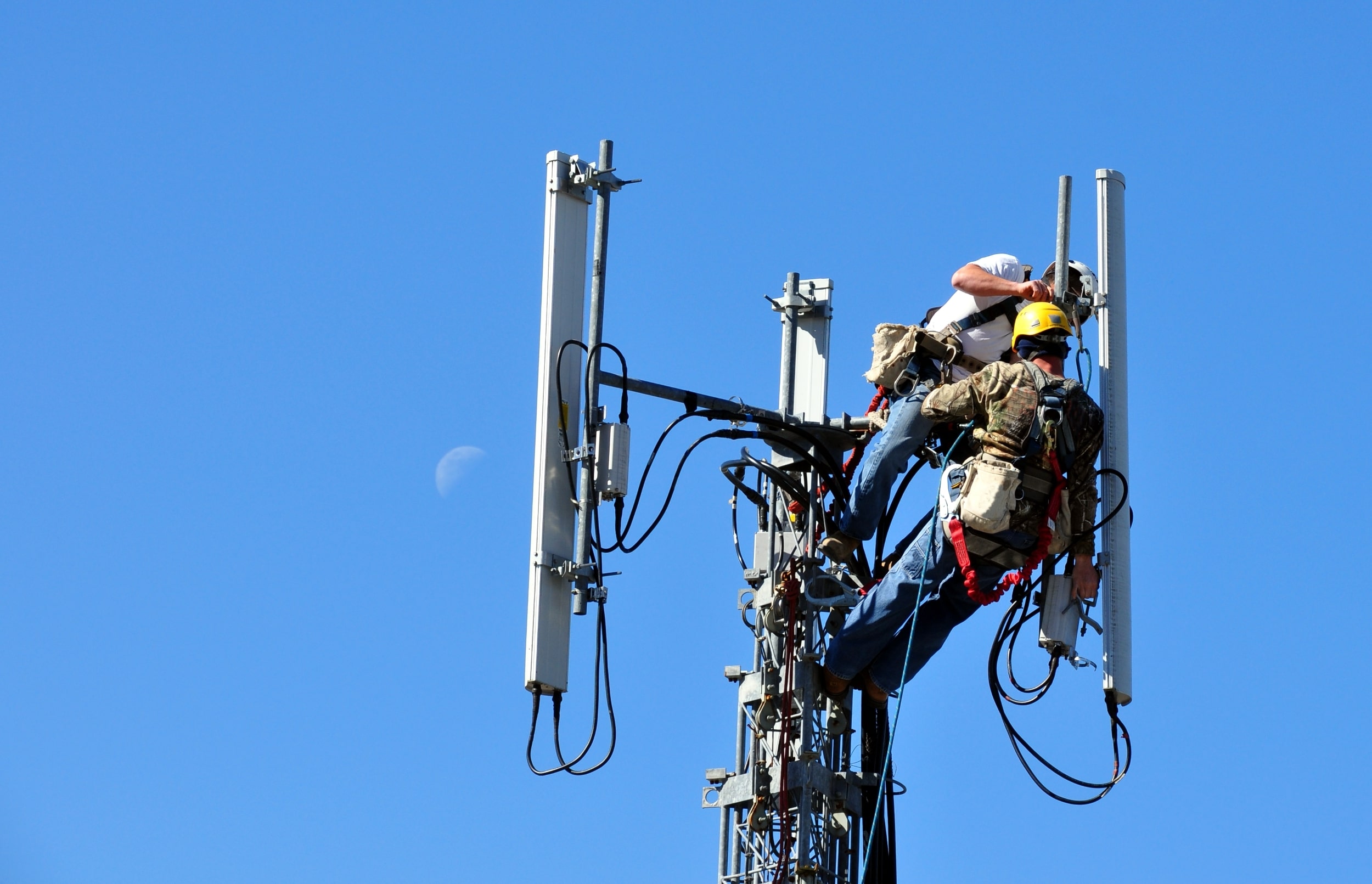MTN Consulting is focused on network operators & their technology supply chains, tracking the economics of the network operator business and assessing the big shifts that impact technology spending trends. Our coverage includes:
3 major network operator markets
- Telecom Network Operator (TNO)
- Webscale Network Operator (WNO)
- Carrier-Neutral Network Operator (CNNO)
190+ operators
Across the three major network operator markets in all key regions
40+ time series
10+ years’ market- and operator-wise data across quarters and years starting 2011
~50 reports published per year
- Market data and insight reports spanning –
- quarterly market reviews
- operator and vendor deep dives
- benchmarking and strategic assessments
- forecast/outlook analysis

Latest report
Telecommunications Network Operators: 2Q24 Market Review
This report reviews the growth and development of the telecommunications network operator (TNO, or telco) market. The report tracks a wide range of financial stats for 140 telcos across the globe, from 1Q11 through 2Q24. For the annualized 2Q24 period, telcos represented $1.77 trillion (T) in revenues (0.1% growth YoY), $262.9 billion (B) in labor costs (2.1% YoY), and $300.7B in capex (-6.9% YoY). They employed approximately 4.48 million people as of June 2024, down 1.2% from the prior year. Below are the key highlights of the report: Revenues: Telco topline declined by 1.4% year-over-year (YoY) to reach $437.8 billion (B) in the latest single quarter ending 2Q24. Revenues for the annualized 2Q24 period were $1,768.3B, up 0.1% YoY over the same period in the previous year. At the operator level, five of the top 20 best performing telcos by topline growth in 2Q24 on an annualized basis include America Movil (8.0%), STC (Saudi Telecom) (5.8%), BT (4.7%), Telefonica (3.6%), and Orange (2.9%). By the same criteria, the worst telco growth came from NTT (-5.7%), KDDI (-5.4%), SoftBank (-4.7%), Vodafone (-1.7%), and China Unicom (-1.6%) during the same period. Capex: Capex spending plunged by 8.0% on a YoY basis to post $69.4B in the latest single quarter ending June 2024. Capex for the annualized 2Q24 period was $300.7B, down 6.9% YoY over the same period in the previous year. At the operator level, five of the top 20 best performing telcos by capex growth in 2Q24 on an annualized basis include BSNL (128.2%), KDDI (23.6%), Telecom Italia (9.1%), Charter Communications (7.9%), and America Movil (7.6%). By the same criteria, the worst capex growth came from Verizon (-26.0%), Reliance Jio (-22.6%), Deutsche Telekom (-20.6%), Vodafone (-14.6%), and AT&T (-13.1%) during the same period. Opex and labor costs: Total opex for the telecom industry in the annualized 2Q24 period stood at $1,502.7B, a slight increase of 0.4% over the same period previous year. Excluding depreciation and amortization (D&A) costs, total opex increased by 1.2% on YoY basis to record $1,172.2B in the annualized 2Q24 period. One significant element of telco opex is labor costs, which include salaries, wages, bonuses, benefits, and retirement/severance costs. Labor costs grew by 2.1% YoY in the annualized 2Q24 period, pushing labor costs as a percentage of opex (excluding D&A) slightly up from 22.2% in 2Q23 to 22.4% in 2Q24 on an annualized basis. This growth occurred despite an ongoing reduction in industry headcount; the telco workforce ended 2Q24 at 4.48 million, down 1.2% YoY. Profitability margins: Both EBITDA and EBIT margins experienced a slight uptick in 2Q24 on an annualized basis compared to the previous quarter. Results were mixed when compared to the same period last year. Annualized EBIT margin dipped from 15.3% in 2Q23 to 15.0% in 2Q24, while the EBITDA margin for the annualized 2Q24 period stood at 34.4%, up from 33.7% in annualized 2Q23. Regional trends: The Americas region outpaced Asia to reclaim its position as the largest region by revenue, holding a 37.3% share in 2Q24. On a capex basis though, the Asia region outspent the Americas, capturing a 36.5% share in the latest quarter. Europe retained the highest annualized capital intensity, reaching 18.4% in 2Q24, followed by MEA at 17.4%. ------------------------------------------------------------------ Important note: We have made some significant enhancements to our telco market review report in 1Q24. The changes are designed to provide a more insightful and user-friendly experience:
o 'Market Snapshot' Tab: This tab now features an interactive dashboard view of the telco market, allowing users to interact with and analyze market data more effectively. Additionally, users can export the dashboard to PDF for convenient sharing and reference.
o Two distinct sections have been created from the previous 'Company Deepdive & Benchmarking' section for greater clarity and functionality:
1.'Company Drilldown': Provides a comprehensive analysis of a selected company from the full set of 140 telcos. It covers various metrics including revenue, capex, employee counts, costs, profitability, cash and debt levels, and key ratios.
2.'Company Benchmarking': Focuses on a sample of 79 telcos, representing approximately 82% of the global market. This section allows users to select and compare up to 5 telcos across multiple metrics such as labor costs, opex, EBIT, as well as revenues, capex, and employee counts. The sample includes operators from all regions and of varying sizes.
Both new sections also feature the capability to export graphics to PDF, enhancing the flexibility and utility of the data presented.Latest reports
- October 16, 2024 Telecommunications Network Operators: 2Q24 Market Review
- September 27, 2024 Telecom’s biggest vendors – 2Q24 edition
- September 26, 2024 Will the data center gold rush come to an end?
- September 12, 2024 Review of 2Q24 capex and outlook for all segments
- August 23, 2024 Webscale Network Operators: 2Q24 Market Review


MTN Consulting is focused on network operators & their technology supply chains, tracking the economics of the network operator business and assessing the big shifts that impact technology spending trends. Our coverage includes:
- 3 major network operator markets
- 190+ operators
- 40+ time series
- 50 reports published per year
Latest report
Telecommunications Network Operators: 2Q24 Market Review
This report reviews the growth and development of the telecommunications network operator (TNO, or telco) market. The report tracks a wide range of financial stats for 140 telcos across the globe, from 1Q11 through 2Q24. For the annualized 2Q24 period, telcos represented $1.77 trillion (T) in revenues (0.1% growth YoY), $262.9 billion (B) in labor costs (2.1% YoY), and $300.7B in capex (-6.9% YoY). They employed approximately 4.48 million people as of June 2024, down 1.2% from the prior year. Below are the key highlights of the report: Revenues: Telco topline declined by 1.4% year-over-year (YoY) to reach $437.8 billion (B) in the latest single quarter ending 2Q24. Revenues for the annualized 2Q24 period were $1,768.3B, up 0.1% YoY over the same period in the previous year. At the operator level, five of the top 20 best performing telcos by topline growth in 2Q24 on an annualized basis include America Movil (8.0%), STC (Saudi Telecom) (5.8%), BT (4.7%), Telefonica (3.6%), and Orange (2.9%). By the same criteria, the worst telco growth came from NTT (-5.7%), KDDI (-5.4%), SoftBank (-4.7%), Vodafone (-1.7%), and China Unicom (-1.6%) during the same period. Capex: Capex spending plunged by 8.0% on a YoY basis to post $69.4B in the latest single quarter ending June 2024. Capex for the annualized 2Q24 period was $300.7B, down 6.9% YoY over the same period in the previous year. At the operator level, five of the top 20 best performing telcos by capex growth in 2Q24 on an annualized basis include BSNL (128.2%), KDDI (23.6%), Telecom Italia (9.1%), Charter Communications (7.9%), and America Movil (7.6%). By the same criteria, the worst capex growth came from Verizon (-26.0%), Reliance Jio (-22.6%), Deutsche Telekom (-20.6%), Vodafone (-14.6%), and AT&T (-13.1%) during the same period. Opex and labor costs: Total opex for the telecom industry in the annualized 2Q24 period stood at $1,502.7B, a slight increase of 0.4% over the same period previous year. Excluding depreciation and amortization (D&A) costs, total opex increased by 1.2% on YoY basis to record $1,172.2B in the annualized 2Q24 period. One significant element of telco opex is labor costs, which include salaries, wages, bonuses, benefits, and retirement/severance costs. Labor costs grew by 2.1% YoY in the annualized 2Q24 period, pushing labor costs as a percentage of opex (excluding D&A) slightly up from 22.2% in 2Q23 to 22.4% in 2Q24 on an annualized basis. This growth occurred despite an ongoing reduction in industry headcount; the telco workforce ended 2Q24 at 4.48 million, down 1.2% YoY. Profitability margins: Both EBITDA and EBIT margins experienced a slight uptick in 2Q24 on an annualized basis compared to the previous quarter. Results were mixed when compared to the same period last year. Annualized EBIT margin dipped from 15.3% in 2Q23 to 15.0% in 2Q24, while the EBITDA margin for the annualized 2Q24 period stood at 34.4%, up from 33.7% in annualized 2Q23. Regional trends: The Americas region outpaced Asia to reclaim its position as the largest region by revenue, holding a 37.3% share in 2Q24. On a capex basis though, the Asia region outspent the Americas, capturing a 36.5% share in the latest quarter. Europe retained the highest annualized capital intensity, reaching 18.4% in 2Q24, followed by MEA at 17.4%. ------------------------------------------------------------------ Important note: We have made some significant enhancements to our telco market review report in 1Q24. The changes are designed to provide a more insightful and user-friendly experience:
o 'Market Snapshot' Tab: This tab now features an interactive dashboard view of the telco market, allowing users to interact with and analyze market data more effectively. Additionally, users can export the dashboard to PDF for convenient sharing and reference.
o Two distinct sections have been created from the previous 'Company Deepdive & Benchmarking' section for greater clarity and functionality:
1.'Company Drilldown': Provides a comprehensive analysis of a selected company from the full set of 140 telcos. It covers various metrics including revenue, capex, employee counts, costs, profitability, cash and debt levels, and key ratios.
2.'Company Benchmarking': Focuses on a sample of 79 telcos, representing approximately 82% of the global market. This section allows users to select and compare up to 5 telcos across multiple metrics such as labor costs, opex, EBIT, as well as revenues, capex, and employee counts. The sample includes operators from all regions and of varying sizes.
Both new sections also feature the capability to export graphics to PDF, enhancing the flexibility and utility of the data presented.Latest reports
- October 16, 2024 Telecommunications Network Operators: 2Q24 Market Review
- September 27, 2024 Telecom’s biggest vendors – 2Q24 edition
- September 26, 2024 Will the data center gold rush come to an end?
- September 12, 2024 Review of 2Q24 capex and outlook for all segments
- August 23, 2024 Webscale Network Operators: 2Q24 Market Review
In The Press
-

-

-

-

April 2024
What lies ahead for India’s Vodafone Idea -

Our Three Core Offerings

Research
MTNC’s research is focused on communications network infrastructure, a market attracting $3.5 trillion in annual operator revenues. Our goal is to provide credible, holistic assessments of where the NI market currently stands and where it is headed. Reports address market and technology trends, key players, and country dynamics.
![2-1[1]](https://www.mtn-c.com/wp-content/uploads/2023/04/2-11.webp)
Subscription
MTNC bundles its research into an annual subscription service called “Global Network Infrastructure”. GNI provides clients with an end-to-end view of the network operator business, assessing the big shifts that impact technology spending trends. GNI clients include technology vendors (chips, network equipment and software, IT services), operators, regulators, and investors.

Consulting
Our consulting services include: scenario planning; market sizing, forecasting, and analysis; organizational strategy; marketing support; competitive benchmarking; and, due diligence support for M&A and PE transactions. We bring experience and independence to the table, and access to the proprietary databases generated by our GNI subscription program.
In The Press
Southeast Asia emerging as the new battleground for cloud service providers
Fierce Network
Hyperscalers gain network infrastructure market share
Inform, TM Forum
Can CSPs realize opex reductions through AI?
Inform, TM Forum
What lies ahead for India’s Vodafone Idea
Fierce Network
SK Telecom’s enduring belief in metaverse spells hope for the technology
Fierce Network
BT confirms Starlink tests as it explores remote connectivity options
Fierce Network
Forecast on Telecoms Capex, Revenue and Business Models
Telecomlead
What does Qualcomm terminating its chip deal with Iridium mean for satellite telecom?
SDxCentral
ZTE stock slides on weaker earnings, falling revenue
LightReading
AT&T, Vodafone, AST hit a 5G satellite milestone
SDxCentral
Amazon, SpaceX extend reach with Vodafone, KDDI satellite deals
SDxCentral
Vodafone expands horizons with Amazon’s Project Kuiper
Fierce Network
Blogs

With each passing day, the 2G and 3G layers of telcos' mobile networks are looming as heavy loads on operating expenses (opex). That's due to multiple issues but especially energy consumption and related costs. With the exist
read more
Vendors continue to wrestle with supply chain constraints in the telecom sector. That's clear from several recent vendor earnings reports, including those issued by Dell, HPE, and Ciena in recent weeks. Telco spending, though
read more
Telco network spending has been on the rise over the last few quarters. Vendor sales of network infrastructure to the telco vertical ("Telco NI”) totaled $55.5B in 1Q22, up 5.7% YoY. On an annualized basis, Telco NI revenue
read more
Telco NI's top 3 Telcos buy products & services from dozens of different vendors. Our research tracks 130. Some are relatively easy to classify into a segment, e.g. Corning, a "cabling & connectivity" vendor in our
read more
It was the Greek philosopher Heraclitus who coined the phrase, “Change is the only constant in life.” Well over a thousand years later, Benjamin Franklin continued the thought, saying, “When you are finished changing
read more
One of the many telecom stats we track is "labor costs", i.e. what telcos spend in salaries and benefits to support their workforce. Not a lot of other analyst firms track labor costs, if any. It's not an easy one to track, a
read moreOur Research Bundles


Meet Our Partners
Stay in the loop
Get our latest blog and research alerts by signing up below.






